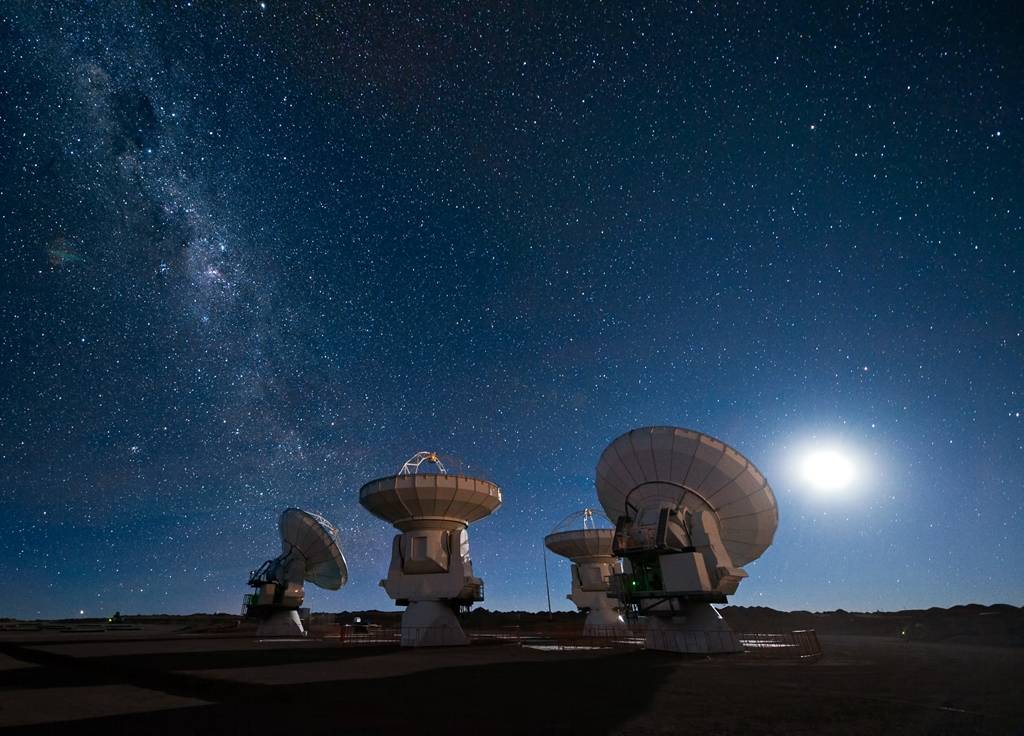
The 25th and final 12-meter (40-foot) antenna manufactured by General Dynamics SATCOM Technologies has been formally accepted by the Joint Atacama Large Millimeter/Submillimeter Array (ALMA) Observatory. Delivered to the Operations Support Facility in the Chilean Andes, the 115-ton, highly specialized radio-telescope antenna is completing final integration and testing before being moved up to the Array Operations Site which is 16,400 feet above sea level.
“The delivery of this antenna concludes a remarkable journey for the General Dynamics SATCOM Technology employees who hand-built each of the preceding 24 antennas,” said Chris Marzilli, president of General Dynamics C4 Systems. “It is gratifying to know that information gathered by our antennas, as part of the ALMA Observatory, is already changing the way scientists understand the universe.”
General Dynamics delivered the first antenna to the ALMA site in Chile in 2007. The extremely dry conditions, where the air is too thin for humans to work without oxygen, is the ideal location for the array because it limits environmental and other factors that would interfere with the antenna’s operation if it were closer to sea level. The antennas act as one massive radio telescope that bends, swivels and points in unison, toward distant corners of the universe.
The company is also supplying 64 specially designed antennas for a new radio-telescope array that is currently under construction in South Africa.
The radio telescope captures faint radio signals emitted from dust and gas that have traveled over hundreds of light years – one light year equals 5.86 trillion miles – to the antenna array. When radio signals reach the ALMA Observatory, the data is processed by an onsite super-computer, enabling scientists to see never-before seen images of the universe in three dimensions.
Scientists at the ALMA observatory recently identified sugar molecules inside a gas cloud surrounding a young star that is about the size of the Earth’s sun. The discovery represents the first time that sugar has been found in the space around that size star, just 400 light years away. Sugar is a critical building block of life and the discovery reveals it is perfectly aligned to become part of new planets that are forming around the star.
Antennas from General Dynamics comprise the North American portion of the ALMA project. North American efforts are led by the National Radio Astronomy Observatory, operated by Associated Universities, Inc. and supported by the U.S. National Science Foundation, National Research Council of Canada and National Science Council of Taiwan. ALMA partners located in Europe and Japan are providing the remaining antennas.
General Dynamics SATCOM Technologies, part of General Dynamics C4 Systems, is a leading supplier of next-generation base station and earth station communications products and services, satellite antennas and antenna systems and wireless products. More information is available at www.gdsatcom.com.
More information about General Dynamics is available at www.generaldynamics.com.
